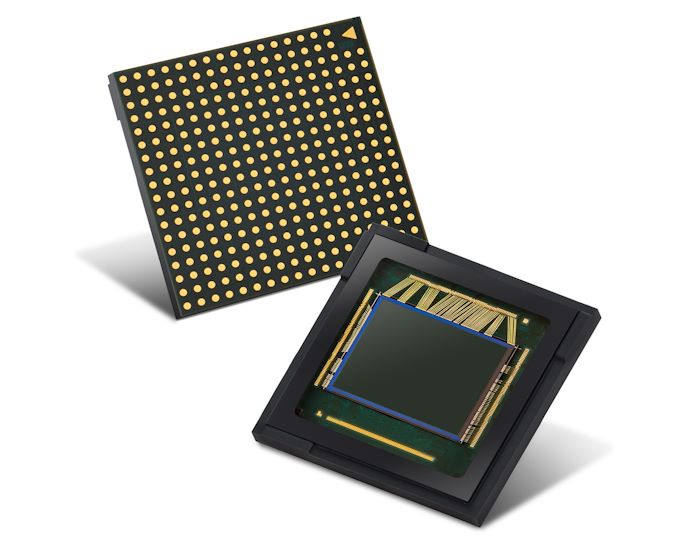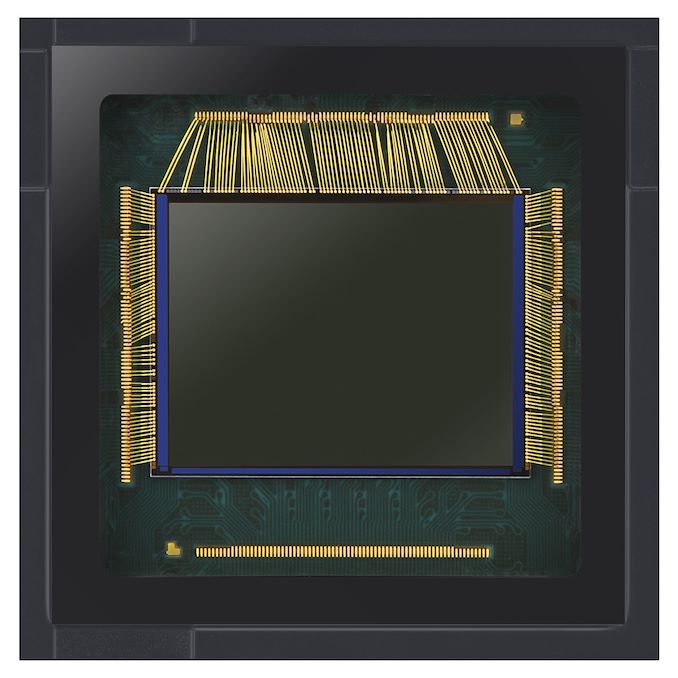Samsung Announces New 50MP Dual-Pixel and Quad-Bayer ISOCELL Sensor
by Andrei Frumusanu on May 19, 2020 6:30 AM EST- Posted in
- Mobile
- Smartphones
- Sensor
- Samsung LSI
- Camera Sensors
- Samsung GN1

Samsung today has announced a brand-new flagship sensor in the form of the ISOCELL GN1. The new sensor is seemingly a follow-up to the 108MP ISOCELL HMX and HM1 sensors that we’ve seen employed by Xiaomi devices and the Galaxy S20 Ultra.
The big changes in the new GN1 is that it uses are different optical formula to the existing larger megapixel sensors. It’s only a bit less than half the resolution at a maximum of 50 megapixels, however the per-pixel pitch grows from 0.8µm to 1.2µm.
It seems that Samsung’s main rationale to grow to a larger pixel pitch wasn’t just the per-pixel increased light gathering ability, but rather the enablement to re-introduce full sensor dual-pixel phase-detection. The existing 108MP sensors that have been out in the market have been using 2x1 distributed on-chip lens phase detection autofocus pixels on the sensor, with the autofocus performance not been nearly as performant and a dual-pixel PD solution. In theory, the GN1 using dual-pixel PD pixels means that it uses pairs of 0.6µm x 1.2µm photo sites.
The GN1 is also the first sensor to pair the dual-pixel technology with a quad-bayer colour filter array, which Samsung calls Tetracell. In effect, the 50MP sensor will natively bin 2x2 pixels to produce a 12.5MP image with effective pixel pitches of 2.4µm. Interestingly, Samsung also talks about providing software algorithms to be able to produce 100MP images by using information from each individual photodiode – which all sounds like pixel-shift super resolution techniques.
The size of the sensor remains at a large 1/1.33” – in essence it’s most comparable to Huawei’s current 50MP sensor that is found in the P40 series phones – with the addition of Dual Pixel PD.
The sensor still supports 8K30 video recording, but we hope it’s able to achieve this with a smaller image crop compared to the current HM1 implementation in the S20 Ultra.
These new generation sensors are extremely challenging for vendors to properly use – besides the increased computational workload to actually use the full resolutions (the reduction from 108MP to 50MP will help there), there’s also the challenge of providing adequate optics that can take advantage of the resolution. It seems the GN1 here is a bit more reasonable in its demands, other than its sheer large size.
Related Reading:
Source: Samsung Newsroom











68 Comments
View All Comments
close - Tuesday, May 19, 2020 - link
There's only so much light a pin-prick aperture will let in.emn13 - Tuesday, May 19, 2020 - link
We're already well beyond the reasonable maximum MP range for smartphone cameras, 50MP is still way too much. The pixel-level quality just isn't there, so there is little lost by downsampling, so why bother with the extra pixels?It's telling that phones like the s20 by default take 12MP images, not 108 or 50 - because even at 12MP pixel-level quality isn't necessarily brilliant, and you just don't need more. Most pictures will be shared or view on a smartphone, and most images aren't of hyper-crisp text; so the meaningful resolution as perceived is likely more like 1-2MP. Having a little more than that to allow the occasional crop and to see some extra detail makes sense, but more pixels may well slightly reduce the light capure and quality (as there are more pixel-borders). Given that even images of more than 2MP are a niche; images of more than 10 or so are a positively tiny niche; is it worth wasting battery life, cost, and some low res image quality for the niche ability to have tons of poorly resolved detail?
No; it's not worth; it simple makes images worse and more expensive. I'd *much* rather a phone take good 8MP images than slightly worse 8MP images with the option for 64MP or whatever.
BedfordTim - Tuesday, May 19, 2020 - link
It is only 50MP for marketing reasons. It is really 13MP with sub pixels for improved deBayering and single shot HDR. The pixel size should roughly match the diffraction limit of the lens so it really is a 13MP. Sony's industrial division has a nice presentation on sub-pixels and why they are worth the small sensitivity loss.fmcjw - Tuesday, May 19, 2020 - link
Can you please provide a link to the presentation, and does it address video quality? Because photos are a good candidate for modern processing techniques, but video usually requires a clean signal, which 1.12 micron pixels just couldn't deliver, even with 3x3 binning. Samsung S20/S20 Ultra still uses 12MP (with larger pixels than prev. gen) for its main camera, rather than a 48MP with 2x2 binning.BedfordTim - Wednesday, May 20, 2020 - link
I saw it at a Sony seminar and unfortunately we didn't get a copy of the presentations. It doesn't offer any significant benefits in terms of low light imaging, and there is a small loss of sensitivity compared to a single big pixel.Video will still be limited by the sensor area, but it does allow you to shoot in HDR.
boogerlad - Tuesday, May 19, 2020 - link
Can you provide a link to the presentation? Would love to read it.Psyside - Wednesday, May 20, 2020 - link
"No; it's not worth; it simple makes images worse and more expensive. I'd *much* rather a phone take good 8MP images than slightly worse 8MP images with the option for 64MP or whatever"
Again, people that haven't seen S20 64MP photos, should not comment
s.yu - Thursday, May 21, 2020 - link
Are you a regular reader of this site? Because Andrei covered this back in April, during the S20+ and S20U review.This is the page:
https://www.anandtech.com/show/15603/the-samsung-g...
And this is the sample you're looking for:
https://images.anandtech.com/galleries/7547/S20-E_...
It looks marginally better in terms of resolution than what I expected of the CFA layout and pixel pitch, but then there's far more sharpening too.
On my 13" 1080P screen, it's unusable at 100%. It's decent at 50%, however 50% constitutes a 4-1 bin, which leaves it at 16MP.
Spunjji - Friday, May 22, 2020 - link
God, you're right. That's terrible at 100%! Absolute junk. Also exactly what I'd have expected, given the design of the sensor and the optics available.Of course the point of that sensor design was never really to produce 64MP images.
Psyside - Sunday, May 24, 2020 - link
What are you talking about? the 64MP are drastically sharper from 12MP ones, and this is an old firmware, get a S20 shot an 64MP daylight photo, and compare it with the 12MP crap, i can't help you more, test for yourself, i did and i know the ENORMOUS difference.